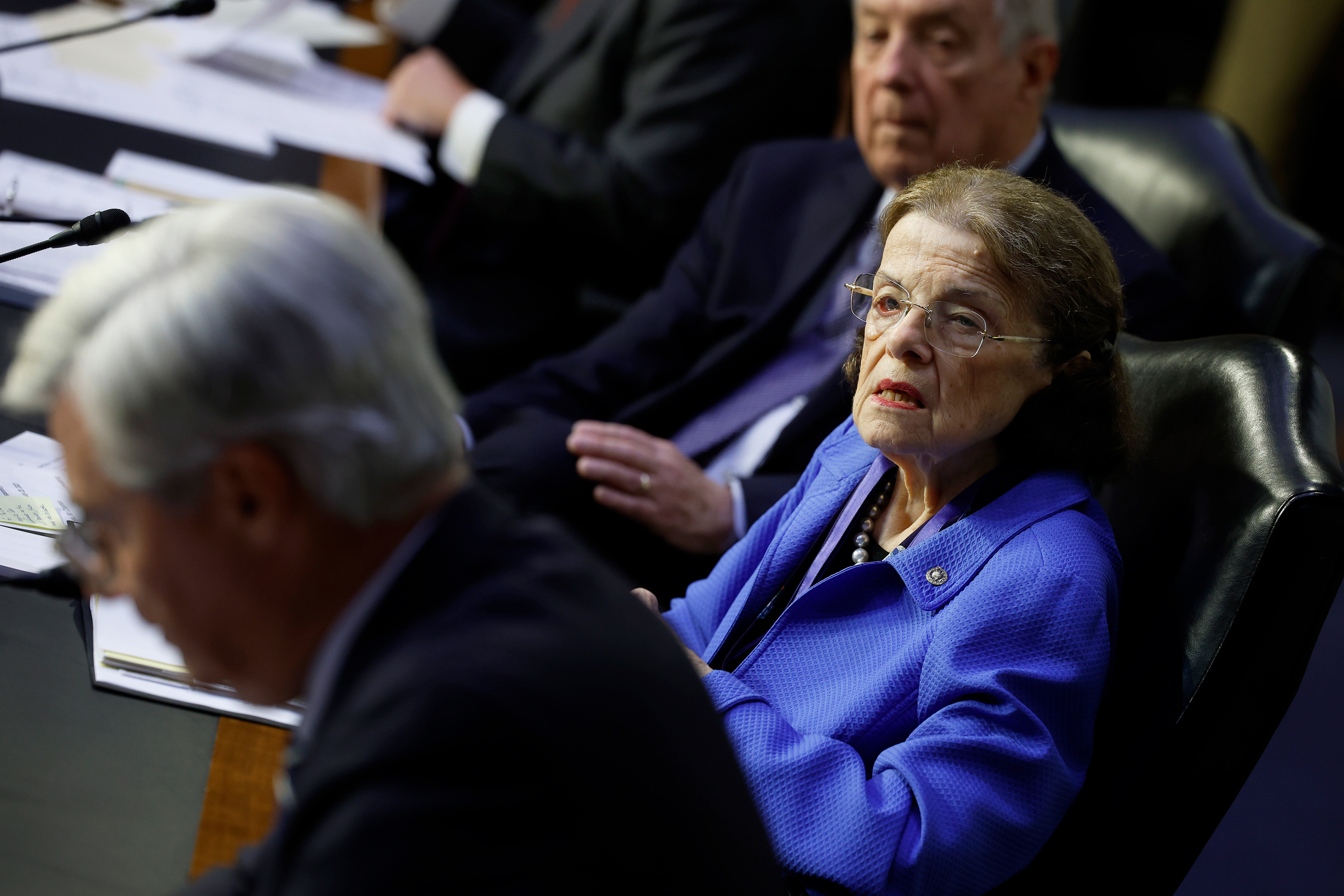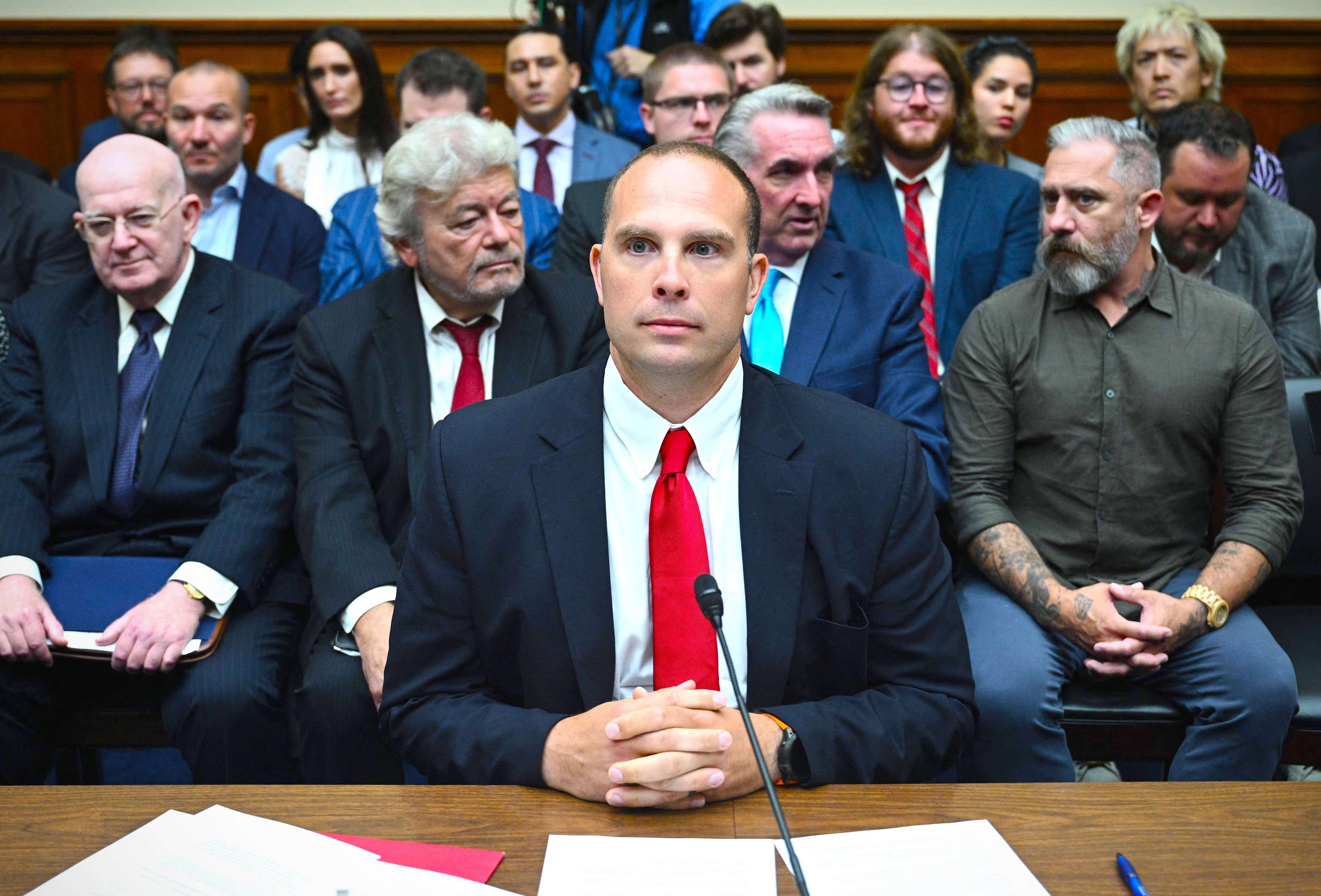The playbook for Ohio Republicans to thwart a ballot initiative enshrining reproductive rights in the state constitution was supposed to be a simple one: Announce a special election in the heat of summer for a proposal to raise the threshold for success from a simple majority to 60 percent; Implore voters to turn out in efforts to "protect" the integrity of the state constitution; And under no circumstances, make the debate about abortion.
That was the advice, at least, offered by strategy firms like OnMessage ahead of the campaign's crushing defeat on Tuesday night. Trump reportedly instructed Ohio Republicans to make it clear to voters that a vote for Issue One was not about banning abortion but to prevent so-called extreme outside interests from using the process to enshrine radical policies in the state constitution outside the oversight of the GOP's solid majorities in the state legislature.
Supporters of Issue One, however, appeared to ignore that advice.
Ohio's Secretary of State Frank LaRose—a Republican who openly advocated for Issue One's passage—publicly claimed the legislation was "100 percent" about abortion at a May 2023 fundraiser. A Newsweek review of nearly a dozen advertisements by advocacy groups pushing for the passage of Issue One found anti-abortion rhetoric often prevailing over other concerns, including the potential for legislation degrading Ohioans' "parental rights," legalizing drug possession, and a proliferation of LGBTQ+ friendly policies based on so-called "cultural whims."

Democrats, meanwhile, hammered Republicans on the abortion issue, running millions of dollars in advertisements accusing Republicans of hypocrisy and changing the rules to avoid a loss on the abortion issue in November. The August special election notably came after Republicans in the statehouse, including LaRose, advocated for the elimination of August elections, due to their low turnout and unjustifiably high cost. And since the U.S. Supreme Court decision overturning the federal abortion protections afforded under the 1973 Roe v. Wade ruling, abortion has been a losing issue for Republicans nationwide.
Several polls conducted in the state in the lead-up to the August election found most Ohioans in support of abortion rights. In neighboring Michigan last year, voters there voted to enshrine abortion rights in their state constitution while, in deep-red Kentucky, voters defeated a similar amendment to ban abortion in the state constitution by a five-point margin. And in several battleground states in the 2022 midterms, abortion arguably helped swing the result of contentious races in states like Pennsylvania, Wisconsin and Michigan in a year Democrats were expected to face ruin at the ballot box.
Abortion, by all indications, was a losing issue. But Republicans, one expert tells Newsweek, just couldn't stay on-message. Particularly as they sought to build a case for why Ohio citizens should surrender the right to overrule one of the nation's most heavily gerrymandered state legislatures at the ballot box.
"What they were proposing was a pretty significant shift to the Constitution," Robert Alexander, founding director of the Institute for Civics and Public Policy at Ohio Northern University and a co-author of the Northern Poll, told Newsweek in an interview. "The burden of proof is on them to say this is why you have to change it. And there was a lot of mixed messaging and, frankly, some hypocritical messaging when you're talking about out-of-state money controlling our constitution. Particularly when out-of-state money was a major player on the 'yes' side."
The ripple effects were clear.
Delaware County—which has not supported a Democrat for president since 1916—voted against Issue One by a 16-point margin. Sandusky County, which supported Republican Donald Trump over Democrat Joe Biden by a 27-point margin in the 2020 elections, only voted to support Issue One by a 12-point margin, according to county-level election data. And Coshocton County, another deep-red county, saw a significant double-digit reduction in the number of "yes" votes compared to the number of Republican votes it saw in the 2022 midterms.
Tonight is probably going to be the first night Delaware county "flips". Last voted for a Democrat 107 years ago. No Dem on the ballot but "No" is a pretty close substitute, IMO.
— J (@OhioJayHey) August 8, 2023
Democrats, meanwhile, turned out in force. According to reporting by the Associated Press prior to election day, more than 533,000 people had voted by mail or in person since early voting began July 11—doubling the early voting figures for Ohio's two previous midterm primary elections. And most of those ballots, according to their reporting, were cast by Democrats.
For Democrats, the secret sauce was simple: put abortion on the ballot. However, Alexander said, Republicans' muddled messaging failed to stoke the base enough to encourage the turnout they would need to get people to the polls, even with the culture war issues that have recently come to dominate the Republican Party platform.
While regional surveys of Great Lakes states like Michigan and Ohio found abortion bans to be incredibly popular among the independent voters Republicans needed to be successful, recent national polling by organizations like the New York Times and Siena College have found Republican voters support so-called "law and order" candidates over social issues candidates at higher rates.
Then there was the simple fact Republicans, Alexander said, tip-toed around their intentions, and failed to rally their base at a time they needed them most.
While the strong anti-abortion contingent in Ohio—about 40 percent of the state, according to Ohio Northern polling—did show up to vote "yes" on Issue One, a fair number of GOP sympathetic voters likely stayed home, he said, helping fuel Democrats' disproportionately large margin of victory. In the 2022 midterm election, for example, Hardin County—where Alexander lives—saw 18,398 ballots cast, helping Republican J.D. Vance carry the county in his U.S. Senate campaign by a roughly 44-point margin.
On Tuesday night, just over 5,700 people voted in Hardin County, with the "yes" votes overtaking the "no" votes by a smaller, 26-point margin.
"Democrats really nailed that issue of abortion and tied Issue One very closely to it, whereas messaging from Republicans was all over the place. And I think that that was something that really hurt them in the homestretch," Alexander said. "I live in rural Ohio and I can tell you, I'm surrounded by a lot of very strong Republican, anti-abortion voters, and many of them felt bamboozled by this amendment."








